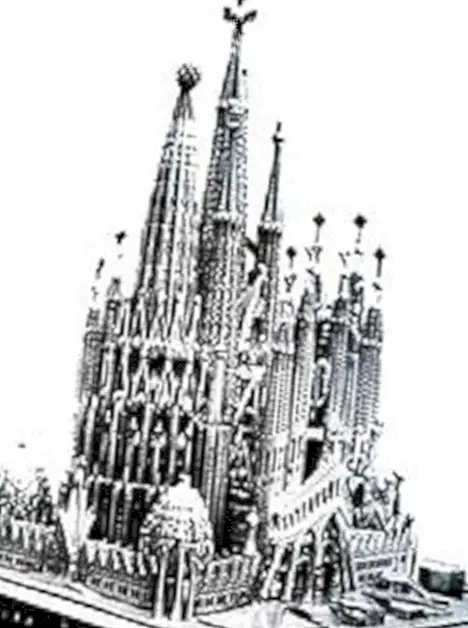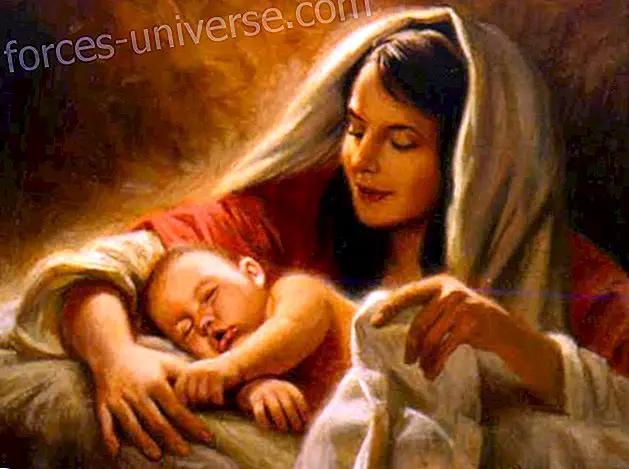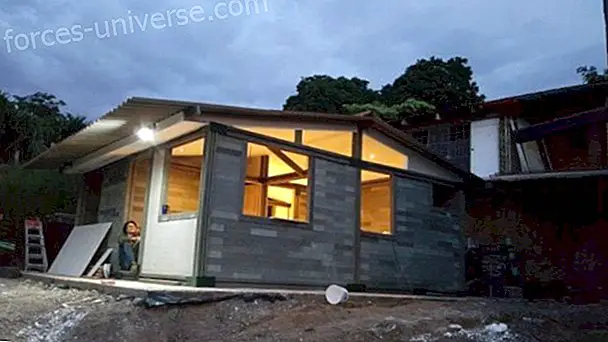INNOVATION COURSE Unit 2. Technologies. Learning Object 7: Hermeneutics
We have studied the rules and penetrated deeply into the world of meanings, however, most of you have not gone beyond feeling the possible significance. Symbol, Meaning, Meaning, Light, are four words that contain ideas, considering the creative energy emanating as the organizer of the symbol, the revealer of meaning and the power of meaning. It was from the secrecy that we take the aphorism " as above it is below ".
While hermeticism was the "Hellenic attempt" to philosophically systematize part of the religious and mystical doctrines of late Egyptian culture, hermeneutics emerged as a theory of human understanding in the late eighteenth and early nineteenth centuries, for interpretation of texts in theology, philology and literary criticism. In philosophy, it is the idealistic doctrine according to which social facts are symbols or texts that must be interpreted instead of objectively described and explained.
The culture is constantly recreating to be interpreted and renegotiated by its members. The spaces to promote culture, such as education, become forums for negotiating and renegotiating meanings and explaining the action, as a set of rules or specifications for the action. It is the aspect of the forum that gives the participants an active and not only passive function, of acting spectators who play their canonical roles according to the rules when the appropriate clues occur. Cyberculture appears as that virtual forum in which the netizens make their comments. Public opinion becomes that vague mental reaction of men who begin to feel the way to reality, or the action of the most active and powerful minds on the mental plane.
But while cyberspace is a simulated reality that is implemented within computers and digital networks around the world, the semiosphere is the world of meanings in which all humans live, move and have their Be . Consequently, education and culture provide a series of rules and techniques whose goal is to link the truth with the subject and get closer to a hermeneutic of Being.
OBJECTIVES
- Establish relations between semi-ethical and hermeneutics.
- Establish differences between the referent, the meaning and the signifier.
- I will understand the revelation from a hermetic model.
RULE FOURTEEN
Know, express, reveal, destroy and resurrect.
ASPIRANTS: Listen, Touch, See, Apply, Know
DISCIPLES: Empathize, Model, Share, Master, Think
LEARNERS: Know, Express, Reveal, Destroy, Resurrect
INTRODUCTORY ACTIVITY: From sacrifice to resurrection
Charlene is John's best friend who, seeing him go through a depressive stage, motivates him to make a reunion trip with himself. Chance or destiny directs John to the rainforest of Per, there some researchers have just discovered ancestral writings that announce the arrival of a new stage for the man who will change the perception above all what surrounds him and will provide him with a new perception for the future. These revelations are supposedly a threat and a risk to those who know them, according to the antagonists.
Later Charlene suddenly disappears while exploring an old forest in the Appalachian mountains in the United States where she begins her adventure in search of the tenth revelation. This trip will open the door to other dimensions, to memories of past experiences and other centuries, to the moment before conception and to the vision of birth, to the passage of death and the revision of the life we all must face.
For the eleventh revelation John arrives in Tibet, where a guide will take him to the city of Shangril . To reach this mythical place, you must reach the most advanced level of revelations of a Tibetan sect. When he finally reaches it, he sees that this promised land, hidden in the highest mountains of Tibet, is maintained thanks to the mental powers of its inhabitants. They create everything they need with the strength of the inner energy and its synchronicity with the environment.
The protagonists receive a piece of an ancient manuscript that contains the secret of the new spirituality that will be revealed to humanity during the second decade of the 21st century. The document is only available in fragments and to understand the meaning of its content it is necessary to find them all. Thus, by means of the `` ball effect '' they can decipher the Twelfth revelation. The Nine Revelations is a 2006 film based on the homonymous novel by James Redfield.
Cody is an 8-year-old boy adopted by Jessie and Mark, a marriage that recently lost his son. Cody is panicking at the fact of falling asleep, something his new parents don't know. At first they believe that this is due to the fact of having to sleep in a new house, but they will soon discover that the real reason is that the dreams of the little one manifest in reality when he sleeps . Thanks to the great love of his new mother, Cody manages to understand the meaning of the perceptions that were in his memory and the differences with reality. Before waking up is a 2016 American thriller.
- After listing the twelve revelations and watching the proposed films, answer the following questions: What are the requirements for spiritual awakening? How have revelations been given to humanity? What are the differences between perception, recognition, significance and interpretation?
ACTIVITY ONE: Significance, space and architecture.

Architecture as an art and technique of projecting, designing, building and modifying the human habitat, found in the temple the best reference to relate the human to the divine.
The temple was par excellence the metaphor used to refer to the body of God. In all construction work three great characters come into play: The Architect, The Master of work and the carpenter.
The Tabernacle in the Desert preceded the construction of Solomon's Temple. The construction of the tabernacle or of the temporary forms constitutes the work of the divine Carpenter, while the construction of the Temple of Solomon or the more permanent structure constitutes the work of the supervising Architect.
Built by medieval Freemasons to ensure the transmission of hermetic symbols and doctrine, our great cathedrals exercised, since their appearance, considerable influence on large numbers of samples of civil or religious architecture. The Great Beings inspired the wandering guilds of Freemasons (who built almost all the magnificent cathedrals of Europe) the idea of Gothic style, precisely as a material medium that led them to the most jubilant and yearning way of thinking that they wanted for their religious services build; but they were too slow to see the analogy. In The Mystery of the Cathedrals Fulcanelli claims to take another look at French Gothic art, focusing on the interpretation of symbolism, according to him, certainly left by the alchemists in stone. The book focuses in particular on the cathedral of Paris and the cathedral of Amiens.
All churches have the apse facing southeast; the facade, to the northwest, and the cruise, which forms the arms of the cross, from northeast to southwest. It is an invariable orientation, established so that faithful and profane, as they enter the temple from the West and go straight to the sanctuary, look where the sun rises, towards the East, towards Palestine, cradle of Christianity. They come out of the darkness and go to the light.
As a consequence of this arrangement, one of the three rosettes that adorn the cruise and the main facade is never illuminated by the sun; It is the northern rosette, which looks on the left facade of the cruise. The second shines in the midday sun; It is the southern rosette, which opens at the right end of the cruise. The latter is illuminated under the red rays of the setting sun; It is the great rosette, the one of the main facade, which surpasses its lateral brothers in dimensions and splendor. In this way, the colors of the Work follow each other on the facades of the Gothic cathedrals, according to a circular evolution that goes from darkness -represented by the absence of light and the color black- to the perfection of the ruddy light, passing for the white color, considered as "intermediate between black and red".
The Basilica of the Sagrada Familia occupies an entire block in the center of Barcelona. Despite its colossal dimensions, it almost seems to float weightless on the ground, like a delicate set of ethereal towers that effortlessly ascend to the city sky. Since the beginning of the works in 1882, many theories explained explaining the mysterious codes of its doors, its helical columns of cosmic inspiration, its facades full of symbols, its mathematical carvings with representations of the magic square or its spectral “skeletal” construction, which It clearly evoked the shape of the bones and connective tissue of a living organism.
The Sagrada Familia has a Latin cross plan, with five central naves and a transept with three naves, and apse with seven chapels. It has three facades dedicated to the Birth, Passion and Glory of Jesus and, when completed, will have 18 towers: four on each portal making a total of twelve for the apostles, four on the cruise invoking the evangelists, one on the apse dedicated to the Virgin and the central dome tower in honor of Jesus, which will reach 172.5 meters high. The temple will have two sacristies next to the apse, and three large chapels: that of the Assumption in the apse and those of Baptism and Penance next to the main facade; It will also be surrounded by a cloister designed for processions and to isolate the temple from the outside. Gaudí applied a high symbolic content to the Holy Family, both in architecture and sculpture, dedicating a religious meaning to each part of the temple. The towers will have two spotlights each that will illuminate the street and the tower of Jesus at night. They are also related to the signs of the Zodiac, the four elements and the four stages of the path to knowledge.
The creation of a “forest of columns” according to Gaudí was aimed at recovering the mental disposition of the first intellectual seekers, for whom the forest was the cathedral of God. It is not surprising, therefore, that Gaudí's colossal modernist work arouses passionate praise and fierce criticism. While some voices call it "sensual, spiritual and organic, " others call it "vulgar, pretentious and profane." If your aesthetic is strange, your financing is even more so. Depending entirely on private donations, the Holy Family does not receive subsidies from the Vatican or any other Catholic entity in the world. The appellation of the atoning temple is then due to the fact that “its financing comes from the donations of believers” and so many will feel redeemed from their sins.
Actually we have two bodies of light. The Old Testament refers to the temple of the vital body (Ecls. 12-6, 7) for the triple personality and the new testament to the causal body of the triple spirit (II Cor. 5-1).
- According to your hologenetic profile, how was your temple built?
ACTIVITY TWO: Interpretation, time and literature.
The function of literature as art is to expose ourselves to dilemmas, to the hypothetical, to the series of possible worlds to which a text can refer. Literature is an instrument of freedom, luminosity, imagination and reason.
The text is a model to describe the world again. The text emerges as a pretext to place the reader in a context. Literary stories refer to events of the "real" world, but they represent that world with a strangely new aspect, rescue it from the obvious, fill it with interstices that encourage the reader to become a writer, the composer of a virtual text, in response to the actual text.
The literary genre seems to be the way to organize the structure of organizing events and organizing their story, which can be used to tell their own stories or, in reality, to locate the stories one is reading or listening to. The epic is the poetry of the past tense, in the third person, the lyric is the poetry of the present tense in the first person, the prospective is the planning in future scenarios. Something in the actual text “triggers” an interpretation in the reader, an interpretation that then dominates the reader's own creation of a “virtual text”.
All text is structured from the fable and the plot, the timeless and the sequential. The fable contains at least three constituents: the conflict, the characters and the conscience. The plot is the way in which the reader comes to know what happened, and the same story can be told in a different sequence. This means that it must include transformations of some kind that allow a common basic structure of the story to be organized in different sequences that retain its meaning. The plot becomes a hypothetical update of the reader's own internal "psychodynamic".
The triggers that lead to the interpretation of the text are budgets, possibilities and perspectives. The presupposition is the creation of implicit meanings instead of explicit meanings. The possibilities are created from a description made not through an omniscient eye that sees a timeless reality, but through the filter of the protagonists of the story. Perspectives lead to see the world not in a unique way but simultaneously through a game of prisms each of which captures a part of it.
It is language that represents a subjunctive reality through six transformations.
It is necessary to open the path between the literary or verbal text and the social text in which we live. The reader creates a world with the meanings that he finds in a text and when there are universal modes of reasoning and valuation the reader applies them to find the meanings encarnados in the text. Meaning is an act that reflects human intentionality. In the end, it is the transaction of meaning made by human beings armed with reason and supported by faith that meaning can be made and rebuilt, which constitutes human culture.
Primitive fables enter the transgression of a legitimate state, a transgression that then causes a crisis that is cut from the roots that persists until it is resolved. Human beings go through five crises during their life cycle, making the correspondence between the inner vision and the outer reality one of the classic human conflicts.
1. The objective crisis: Reset crisis. Which leads to the Polarization crisis.
2. The subjective crisis: Orientation crisis. Which leads to the Renunciation crisis.
Therefore, the crises with which we all must face right now encompass four words of a major crisis. RESET-POLARIZATION-ORIENTATION-RENUNCIATION.
The crisis of humanity has to be seen in triple form, when it is revealed by the spiritual light that comes to us as we build the rainbow bridge.
1. When the world situation is revealed in the light of the rainbow, does it reveal a crisis in our lives that corresponds to the world crisis ?, and if so, what kind of crisis? is?
2. When the world situation is revealed in the light of intuition, do we understand the meaning of what is happening to mankind? What do we really believe is happening?
3. As the world situation, in the light of events makes its presence felt, what can we do to help and serve? It is said that the divine light reveals the purpose of God and inspires us our vital function. What is the purpose of that divine intention for us?
The INTENTION inevitably and correctly produces TENSION. The objective of the group work is threefold: 1. Right Intention: that produces straight orientation.
2. Right Intuition: which produces fluence of lighted knowledge from the divine light.
3. Straight Inspiration: which leads to the construction of the rainbow and its correct use.
The great story is to address human conflicts that are accessible to readers. But at the same time, conflicts must be presented with sufficient subjunctivity so that they can be rewritten by the reader, in order to allow the play of his imagination.
Making the internal drama external helps the reader to identify not only with the characters but also with the human conflicts in which they find themselves. For example, the cartoon about the Ant Man, begins by telling the story of the biochemist Henry Pym who discovered the subathemic particles. His small self would be Antman and his big self Goliath, in addition to the cocky yellow Jacket, and the giant Man.
- Write a text that includes the plot of how your selves have interacted.
ACTIVITY THREE: The resurrection, the action and the dramaturgy.
Dramaturgy as an action and effect of creating, composing, staging and performing a drama, turning it into a theater show, involves poetry and music, as well as dance, opera or circus.
The drama represents the "character in action, " and the action certainly involves the plot and its setting. The drama is generated when there is an imbalance in the proportion of its constituents: characters, goals, media and environments.
A character is in an inappropriate environment, or an action does not guarantee the achievement of the goal towards which he is leading a character. The inseparability of the character, the environment and the action must be deeply rooted in the very character of the narrative thought. There are different ways to combine the three factors to build the dramas of fiction. The psychological novel puts the engine in the action of the characters and not in the plot. What is at the core of a psychological story is the notion of a "character" or a "cast of characters."
The characters are the result of the evolution of the Greek concept of the hero, who is known for his exploits. The figures are defined by the place they occupy in a revealed drama; the roles are not assigned by their features but instead have the features of their prototypes of myth or sacred scriptures. People are defined by their facts and their rights, the roles of a person and their place in the narrative come from the options that place them in a structural system, in relation to others. When we conceive people exclusively as sources of responsibility, we see them as souls or minds, committed to reason. When we think of them as having rights and faculties, we see them as personalities. Finally, individuality, born from the corruption of personality societies begins with awareness and ends with awareness.
Each of the distinctions presented is a way of interpreting, as well as a way of describing, and the limits are not clear in either. The descriptions become dramatic in embodying a conflict. So our journey back to the Father implies following the process of individuation to identification through the integration of personality. Example: Jesus of Nazareth (Individual). The carpenter (Personality). King of the Jews (Person). Teacher (Figure). Jesus Christ (Character).
The Gospels do not describe historical facts, but a drama that was represented with a special purpose, similar to the ancient mysteries with their initiation rites, understood as the introduction to a circle of new ideas. The legend of the historical Christ was composed of five acts: birth, baptism, transfiguration, death and resurrection. A real event carried out in Jerusalem.
- Write the current script of the act in which you find yourself representing your drama.
THE REVELATION: Politics, economy or technology.
There are certain changes that the disciples themselves must initiate, changes that will not affect the external environmental conditions, but will concern the internal mental developments, attitudes and processes. These self-initiated decisions can lead to and lead to a basic and internal instability, this internal disturbance being necessary and preparatory for major internal crises, which lead, as you well know, to stress points, and from a stress point, personality fusion. soul can progress towards greater light and a solidly understood love.
The whole objective of the learning process is to bring revelation. They must always remember that what is revealed is eternally present. Therefore, there is a hidden truth in the statement "nothing new is under the sun." Everything revealed in the phases of discipleship and learning has always been there, but what can be perceived, externalized and included, has developed with the ages. In the early stages of the discipleship phase, the eye of vision is the enlightened mind. The learning phase is one in which the eye of the mind constitutes exteriorization - the intuitive perception of the soul itself.
There are three stages of activity that carried out properly, will make what is revealed useful for the apprentice when it contributes to the salvation of humanity, and they are, Penetration, Polarization and Precipitation.
Internal Subjective Techniques:
to. The stage of the "Moving Point of Light".
b. The stage of the correct direction of the light power.
C. The stage of spiritual impact.
The External Objective Technique of:
to. Penetration.
b. Polarization.
C. Precipitation.
The phrase "Revelation Points" summarizes a very definite technique, used when training apprentices for interpretation. All life is destined to follow a progressive series of awakening. Progress, movement, awakening, expansion, lighting, evolution, growth-these are a few words of the many that apply to the effects, both internal and external, of the creative process. The divine intention is a project fully understood by the Universal Mind; We call it Purpose when Shamballa captures the synthesis of this comprehensive intention, and we call it Plan when we refer to the work carried out by the Hierarchy to express that Purpose as fully as possible. We call it Participation when development plans are built by members of Humanity. Each of these Centers has a central Triangle that governs and controls them. The Humanity triangle emerged from world politics and governments, research-development activities and from the world economy and finance.
A developmental crisis occurs due to certain entrenched mental habits. The consideration of the crises during the life provide the tension points that opportunely allow to advance towards a greater spiritual experience and effectiveness. The points of revelation given to Humanity after the Second World War were:
1. Energy follows thought and the eye directs energy.
Physical plane First graduation Ajna center. The light of the mind (third eye).
2. The will is an expression of the Law of Sacrifice.
Astral plane. Second Graduation Heart center The "point of advancing Light."
3. The Monad is for the Planetary Being what the third eye for man.
Mental plane. Third graduation Coronary center The light of the Purpose.
4. The Purpose itself is an energy released within the limits of the Council Chamber.
Intuitive plane Fourth Graduation Laryngeal center The light on the Path.
5. When the light of the seven rays merges into the seventh, the supreme light can be known.
Plan of intention. Fifth and sixth graduations. Senior high center. The extraplanetary light.
Three ideas are necessary to understand the significance of these points of revelation that, once captured, appear in all their beauty, clarity and simplicity. The procedure required for the manifestation of the "supreme light" takes place when a transitory level of synthesis is reached and the seven energies merge into a great energetic Light. These seven energies together have always created the "supreme light" at the highest levels of divine expression, but that revealing light finds Location only when the seventh ray of Ceremonial Order is active and in the process of manifesting itself in the third dimension and necessarily in the seventh plane, the physicist. Such manifestation inevitably takes place in times of planetary crisis, when the seventh ray is active and the Sun is in Aquarius. This combination of relationships is now being established because the seventh ray is manifesting rapidly, and the Sun is in Aquarius, now beginning the Aquarian era. The objective of this combination is to bring enlightenment and establish order on Earth.
The thirst for knowledge constituted science; the search for wisdom led to philosophy; God's love contributed religion; The hunger for truth is a revelation. But it is Thought who grants the feeling of reality to man's spiritual discernment in regard to the cosmos. Today we speak in terms of vision, mission and development plan in organizations.
THE WEAVER IN THE LIGHT
The five words given to the aspirants are actually relatively simple. Most of them understand its meaning to some extent. They know that the aforementioned act of listening has nothing to do with the physical sense of the ear, and that of touching, which must be developed, refers to sensitivity and not to the sensory perception of the physical vehicle. They also know that the act of seeing, which they must cultivate, is the power to see the underlying beauty in form, recognize subjective divinity and also register the love imparted through symbols. The application of the energy of the soul to the affairs of daily life and the establishment of those conditions that allow the knowledge of the soul, constitute the elementary lessons of the disciple.
You will have noticed that the aspirant arrives in a timely manner to knowledge using the sense organs and begins to know; the disciple begins knowing and empathizing, the apprentice by means of his ability to express esoterically what he knows, can reveal the light and through it, destroy the illusion, the mirage and maya; producing the resurrection on the physical plane, resurrection of death, which inevitably confers life on the physical plane.
We have learned how our human design was projected as a set of smaller channels or energy channeling tubes that gave rise to the plexuses of the nervous system and the glands of the endocrine system, all thanks to the fact that we wove a network before birth. The web was woven as follows: The thread of life was introduced into the heart and the thread of consciousness in the brain. With these two threads, we will begin to weave creativity.
The thread of creation will use the larynx, for this the human being had to create his triple thread of creativity as well: from the heart to the splenic center to form the vital body and thus join the willpower, from the solar plexus passed to the heart to form the emotional body and thus join the force of love. From the ajna center it passed to the brain forming the mental body and thus joining the force of knowledge. The triple thread created by the human being together with the two threads of the soul make the human being a conscious and creative personality. A prolongation of the fivefold thread passes into the larynx and the human being becomes a conscious creator in the physical plane. Thus we form the five bodies of the human matrioska .
MICROCOSM
MAN
PLANET
SYSTEM
COSMOS
MACROCOSMS
Body
Personality
Mind
soul
Intelligence
Spirit
We can only differentiate the spheres of the dragon from the gems of the infinite. The thread of life wove the permanent atoms which dragon spheres to fulfill his desire in the central center. The seven rays wove the body of the soul using seven gems that will be synthesized in the long center to connect us to the infinite, but only three of these jewels express the major aspects of divinity: soul (heart), mind (design) and personality.
JORGE ARIEL SOTO L. END
JULY 1, 2018
REFERENCES
Clifford Geertz. The interpretation of cultures. Mexico: Gedisa. 1987.
Dan Brown The origin. Barcelona: Planet. 2017
Fulcanelli The mystery of the cathedrals. Madrid: Iberian America. 1995
Jerome Bruner Mental reality and possible worlds. Barcelona: Gedisa. 2004
Paul Ricoeur Time and narrative.






